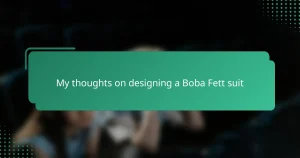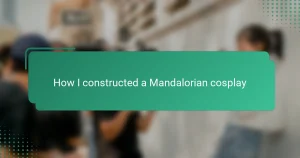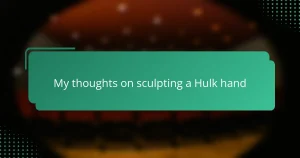Key takeaways
- Science fiction props enhance immersion, creating emotional connections and storytelling beyond mere words.
- Choosing durable, lightweight materials like EVA foam and plastics is essential for practical and realistic costume creation.
- Precision tools, such as rotary tools and heat guns, are vital for achieving authenticity in prop and costume design.
- Planning, patience, and attention to detail are crucial for successful costume building, transforming simple materials into iconic representations.

Understanding science fiction props
Science fiction props, in my experience, are more than just objects; they’re bridges to other worlds. When I first started working with these props, I realized how they carry a story and atmosphere that words alone can’t capture. Have you ever held something that instantly made you feel like you were in a galaxy far, far away? That’s the magic of well-crafted sci-fi props.
Understanding the craftsmanship behind these items deepened my appreciation for the genre. It’s fascinating how a simple piece of plastic or metal, combined with thoughtful detailing and paintwork, can transform into an iconic element like a lightsaber or a helmet. For me, each scratch or weathering mark tells a tale of battles fought or adventures embarked upon.
But beyond aesthetics, there’s an emotional connection that develops. I found myself not just admiring the props but embodying the characters they represent. Have you ever noticed how wearing or holding a prop can shift your mindset? It’s this immersive quality that makes science fiction props so compelling and why creating them felt like stepping into someone else’s universe.
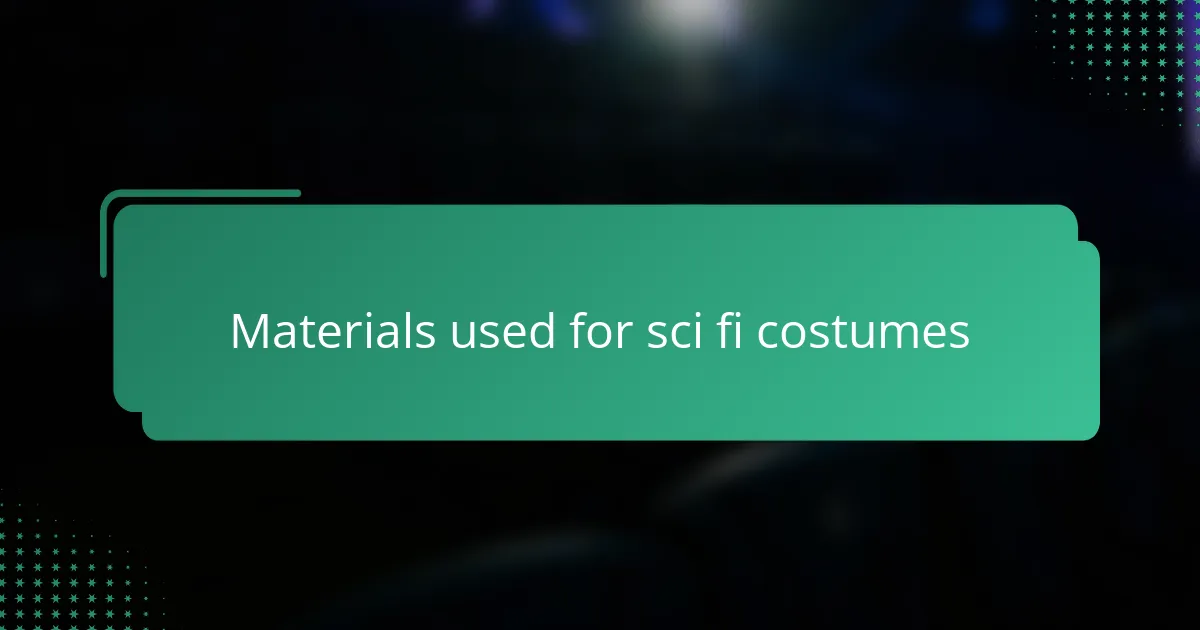
Materials used for sci fi costumes
When choosing materials for sci-fi costumes, I quickly learned that durability is key. Plastics like ABS and PVC became my go-to because they’re lightweight yet sturdy, perfect for creating those sleek, futuristic surfaces without feeling weighed down. Have you ever tried moving in a costume that feels like a suit of armor? Trust me, comfort counts just as much as looks.
Foams, especially EVA foam, played a huge role in bringing my Darth Vader suit to life. It’s amazing how this flexible material can be shaped and layered to mimic armor plating, giving a costume that authentic sci-fi texture without the metal’s heaviness. The first time I carved and heat-formed EVA foam, I felt like a sculptor shaping a reality from imagination—there’s something deeply satisfying in that hands-on process.
Then there’s the matter of finishes—paint, weathering powders, and glossy coatings that transform simple materials into something cinematic. I remember spending hours layering black gloss and matte paints, tweaking reflections to capture Vader’s ominous presence. It’s incredible how the right finish can turn foam and plastic into something that feels as real and commanding as the Dark Lord himself.
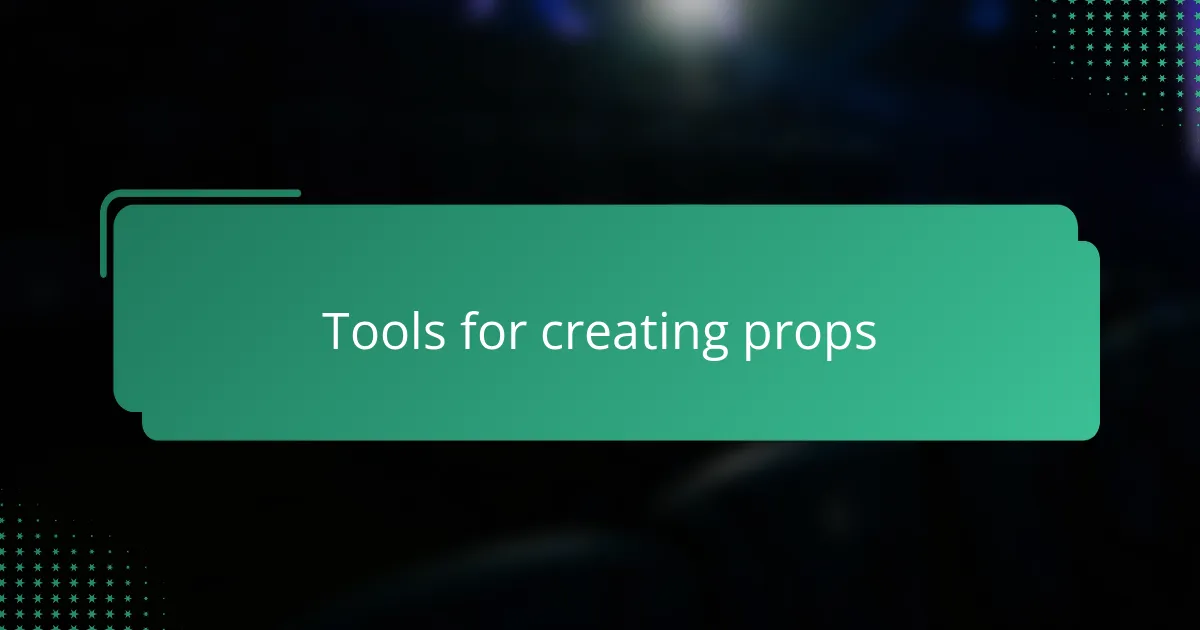
Tools for creating props
When I first started working on my Darth Vader costume, I quickly realized that the right tools make all the difference. Precision cutting knives, rotary tools, and heat guns became my constant companions. Have you ever tried shaping EVA foam without a heat gun? It’s nearly impossible to get those smooth, curved surfaces that really sell the look.
One tool that surprised me was the Dremel rotary tool—it’s like having a tiny sculptor in your hand. I spent hours sanding edges, carving out details, and adding tiny imperfections that give the armor its battle-worn feel. Trust me, the difference between a rough cut and a smooth, beveled edge is night and day when your goal is authenticity.
And then there are the basics—measuring tapes, clamps, and glue guns—that keep everything together. I can’t tell you how many times a well-placed clamp saved a tricky seam from falling apart while the glue set. It sounds simple, but those small tools became the backbone of my build, turning wild ideas into a tangible, wearable piece of sci-fi history.
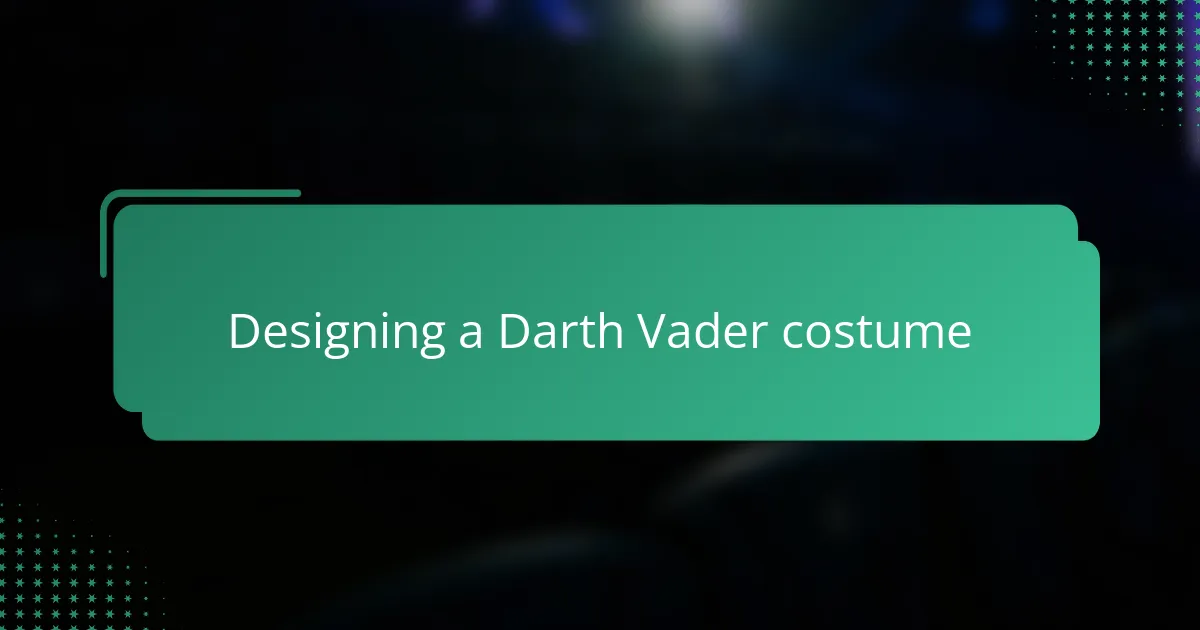
Designing a Darth Vader costume
Designing a Darth Vader costume felt like stepping into the mind of the character himself. I remember staring at reference images, trying to decode how every panel, every light, and every angle contributed to that menacing silhouette. Have you ever tried breaking down an icon into buildable pieces? It’s like solving a three-dimensional puzzle where every detail matters.
One challenge I faced was balancing screen accuracy with practicality. Vader’s armor looks rigid and heavy on screen, but I knew I had to move and breathe inside it. That meant rethinking some elements, using flexible materials yet maintaining that armored look. It was a constant negotiation between authenticity and wearability, and each compromise taught me something new about costume design.
The helmet was possibly the most intimidating piece to create. Its smooth domes and sharply defined features require precision and patience. When I finally shaped the curved visor and attached the front grill, I felt a rush of accomplishment—I was holding the core of Darth Vader’s identity in my hands. Designing that helmet made me appreciate just how iconic and carefully crafted this costume truly is.
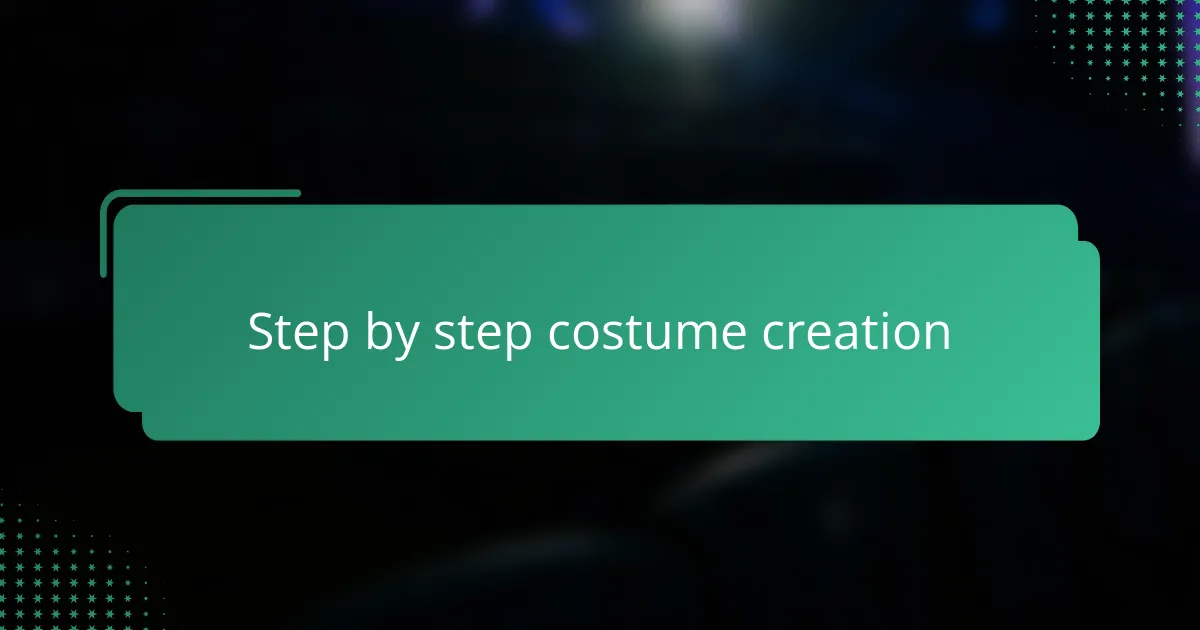
Step by step costume creation
Each step of creating my Darth Vader costume was like piecing together a puzzle where every part mattered. I started by crafting the armor’s base shapes from EVA foam, carefully cutting and layering to build that distinctive silhouette. Have you ever noticed how getting the right proportions early on makes all the difference? For me, this foundation set the tone for everything that followed.
Next came the detail work, which demanded patience and a steady hand. Using my Dremel tool, I carved out the intricate panels and vents that give Vader’s armor its mechanical depth. It wasn’t just about replicating shapes; I wanted every edge and curve to evoke the same ominous feel that the character carries on screen. This part felt like bringing the costume’s personality to life.
Finally, the finishing touches transformed what was once plain foam into something truly cinematic. Layering gloss and matte paints, then adding weathering effects, I watched the costume evolve from raw material to the Dark Lord’s imposing armor. Did I ever imagine that hours of careful brushwork would result in that eerie shine? It was moments like these when the creation felt less like a project and more like a tribute.
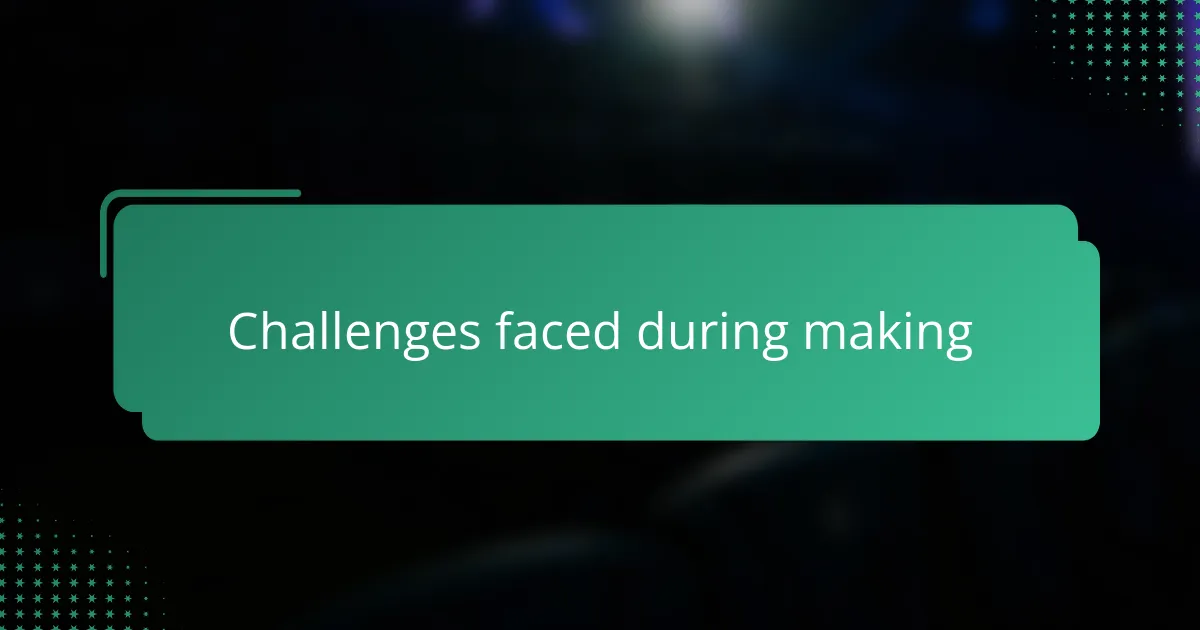
Challenges faced during making
One of the biggest challenges I faced was getting the helmet’s shape just right. I underestimated how tricky those smooth curves and sharp lines would be to replicate in foam—it took countless tries, heat adjustments, and sanding sessions before it felt anywhere near accurate. Have you ever struggled to shape something that seems simple but keeps slipping away from your vision? That was me, inching closer with every imperfect attempt.
Another hurdle was balancing durability and comfort. Vader’s armor looks heavy and rigid, but I needed to move and breathe inside it. Finding materials that held the right form without turning the costume into a suffocating suit felt like walking a tightrope. I spent many afternoons reconsidering glues, joint placements, and padding, learning that flexibility sometimes means accepting small compromises on screen accuracy.
Then there were the tiny details—like making sure each panel aligned perfectly and that all edges blended seamlessly. At times, I got caught up obsessing over minute imperfections that slowed progress but made all the difference visually. It was frustrating, but I came to appreciate that this slow grind is part of what transforms a simple prop into an iconic costume. Have you ever been so deep in a project that time just slipped away? That’s where I found myself, lost in the details yet motivated by the end goal.
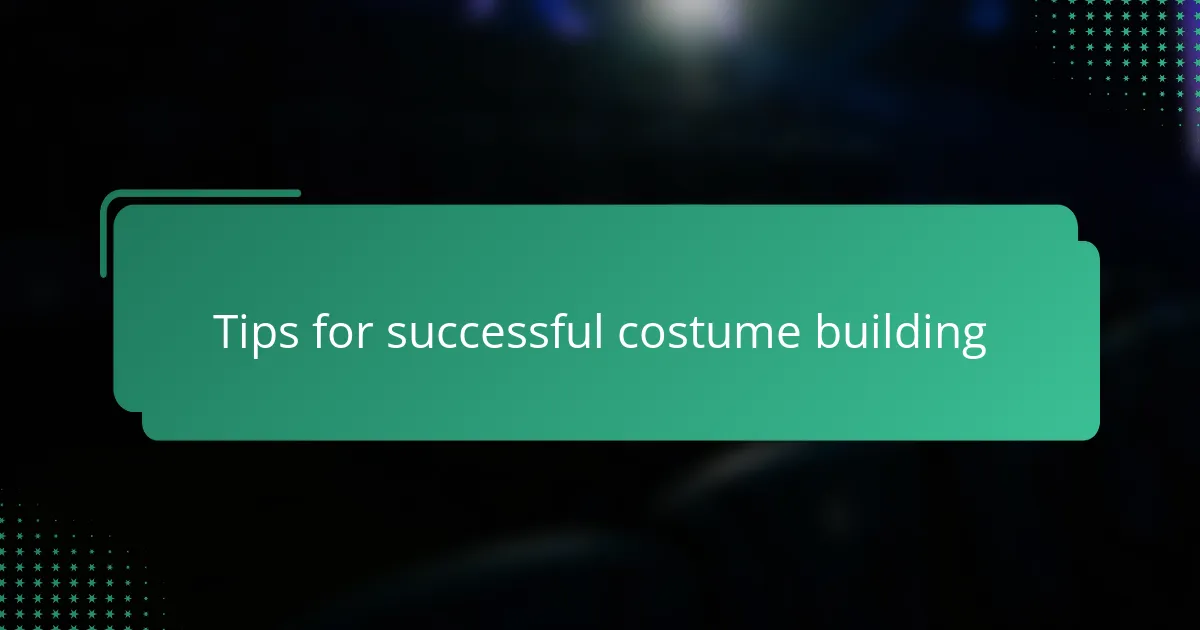
Tips for successful costume building
One tip I can’t stress enough is to plan your build carefully before diving in. Sketching out each piece and visualizing how they’ll come together saved me from countless headaches. Have you ever started a project halfway only to realize you missed a crucial step? That kind of oversight can turn hours of work into a frustrating mess.
Another key is to embrace patience—especially when working with tricky materials like EVA foam. Early on, I learned the hard way that rushing through cutting or heat shaping leads to regrets and wasted material. Taking the time to test fits and refine edges made all the difference in creating smooth, authentic-looking armor.
Lastly, don’t underestimate the power of small details. I found that weathering, paint layering, and fine sanding brought my costume from “good” to “legendary.” It might feel tedious, but those finishing touches are where the real magic happens. After all, isn’t it those subtle marks and textures that make Vader’s suit so menacing and memorable?
